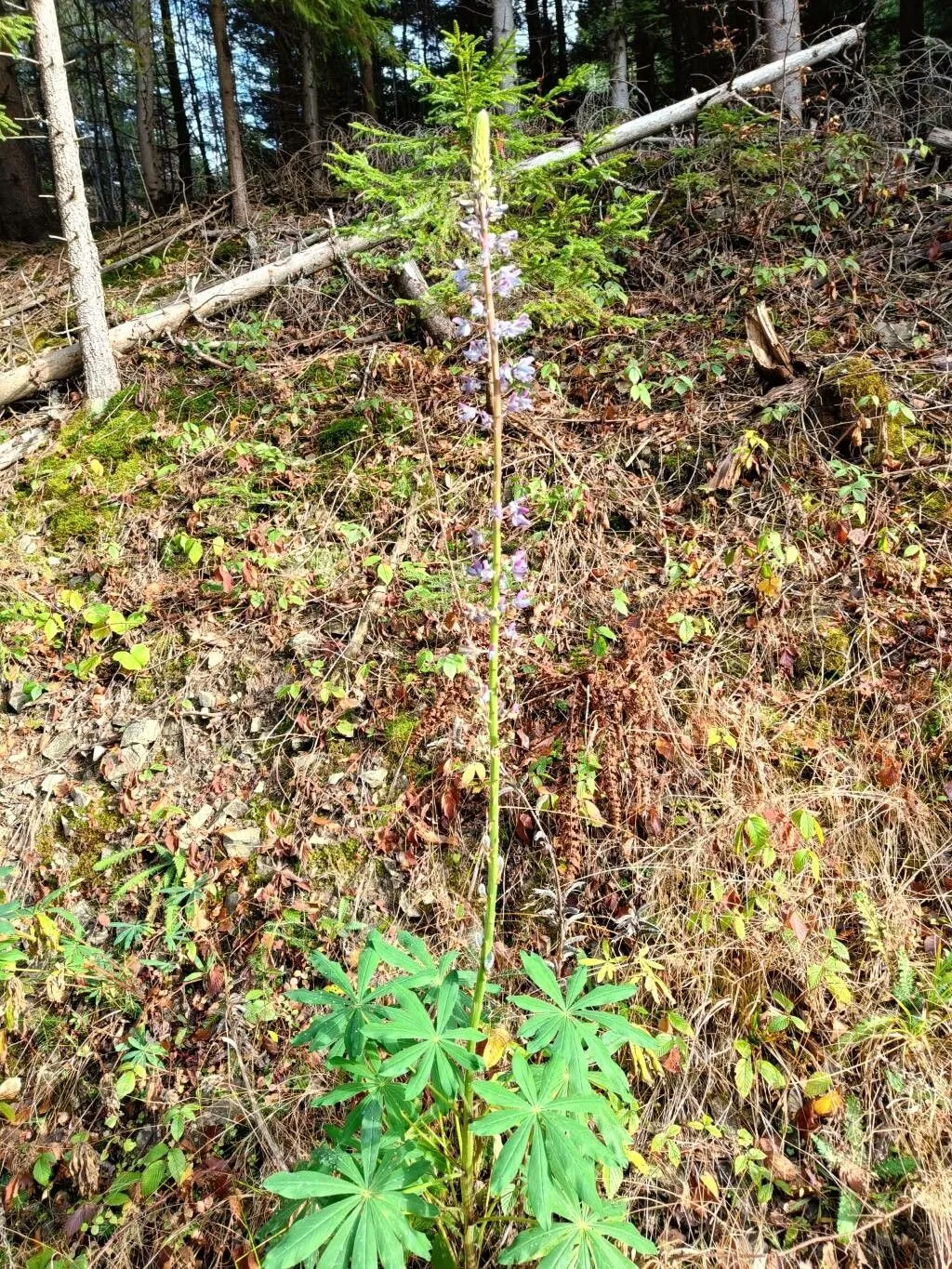
Author: L.
Bibliography: Sp. Pl.: 721 (1753)
Year: 1753
Status: accepted
Rank: species
Genus: Lupinus
Vegetable: False
Observations: SE. Canada to NC. & E. U.S.A.
The Sundial lupine, scientifically known as Lupinus perennis, is a striking plant that captures the eye with its vibrant violet to blue flowers. First described in 1753 by the renowned scientist Carl Linnaeus, this species stands as a testament to the diversity and beauty of North American flora.
Typically found in regions stretching from southeastern Canada down to North Carolina, and throughout the eastern United States, the Sundial lupine thrives in these diverse habitats. It flourishes in well-drained, sandy soils often found in open woodlands, prairies, and sometimes along roadsides, exhibiting a preference for sunny spots that mimic its native range’s conditions.
Belonging to the Fabaceae family, which also includes beans and peas, the Sundial lupine plays an important ecological role. As a legume, it has the unique ability to fix nitrogen in the soil, thanks to its symbiotic relationship with Rhizobia bacteria. This process not only benefits the lupine itself but also improves soil fertility, making it a valuable plant for sustaining the health of its ecosystem.
The plant is characterized by its palmately compound leaves, which consist of 7 to 11 leaflets, and its tall, erect flower spikes that can reach up to 1-2 feet in height. Each spike is adorned with numerous, densely packed flowers, creating a visually stunning floral display that attracts a myriad of pollinators such as bees and butterflies. The blooming period usually occurs from late spring to early summer, transforming landscapes into tapestries of blue hues.
In addition to its ecological contributions, the Sundial lupine holds cultural and historical significance for many indigenous tribes who have utilized the plant for various purposes, ranging from medicinal uses to crafting materials.
Despite its resilience, Lupinus perennis faces challenges from habitat loss and fragmentation, which have led to declines in some of its populations. Conservation efforts are thus crucial to preserve this species and ensure that future generations can continue to enjoy the beauty and benefits it offers.
Eng: blue-bean, sundial lupine, wild lupine, perennial lupine
Deu: ausdauernde lupine
Swe: gruslupin
Nno: jærlupin
Nob: jærlupin
Ces: lupína trváca
Fra: lupin vivace, lupin pérenne
En: Sundial lupine, Blue-bean, Wild lupine, Perennial lupine, Nootka lupine, Wild Lupin
Ar: ترمس معمر
Bg: Многогодишна лупина
Zh: 宿根羽扇豆
Cs: Lupína trváca
Nl: Overblijvende Lupine
Fi: Pulskalupiini
Fr: Lupin vivace, Lupin pérenne
De: Ausdauernde Lupine
Is: Refalúpína
It: Lupino perenne
No: Jærlupin
Nb: Jærlupin
Nn: Jærlupin
Os: Æхсæдæнтæ
Pt-br: Tremoço-perene
Ro: Lupin peren
Es: Altramuz perenne
Sv: Gruslupin
Uk: Люпин багаторічний
Taken Jun 10, 2022 by Emma (cc-by-sa)
Taken Jun 16, 2021 by Ralf Bärsch (cc-by-sa)
Taken Jun 30, 2021 by Mariusz Staniszewski (cc-by-sa)
Taken Jun 18, 2022 by Blue Bottle (cc-by-sa)
Taken Jul 12, 2022 by Bram W (cc-by-sa)
Taken Jun 5, 2021 by amanda kukle (cc-by-sa)
Taken Nov 8, 2022 by alejandra marcela (cc-by-sa)
Taken Nov 11, 2022 by Michał Maciążek (cc-by-sa)
Taken Apr 8, 2022 by pabon alejandro (cc-by-sa)
Taken Jun 30, 2021 by Mariusz Staniszewski (cc-by-sa)
Taken May 25, 2020 by floradine (cc-by-sa)
Taken Apr 13, 2021 by Aurélien Schacht (cc-by-sa)
Taken May 19, 2020 by Laura Rathbone (cc-by-sa)
Taken May 18, 2022 by Pierfrancesco Sechi (cc-by-sa)
Taken Jun 30, 2021 by Mariusz Staniszewski (cc-by-sa)
Taken Jun 19, 2015 by Helmut Schütz (cc-by-sa)
Taken Aug 21, 2022 by Carsten Michaelis (cc-by-sa)
Taken Sep 21, 2022 by Karin Colombi (cc-by-sa)
© copyright of the Board of Trustees of the Royal Botanic Gardens, Kew.
Growth habit>: Forb/herb
Family: Myrtaceae Author: (F.Muell.) K.D.Hill & L.A.S.Johnson Bibliography: Telopea 6: 402 (1995) Year: 1995 Status:…
Family: Rubiaceae Author: Pierre ex A.Froehner Bibliography: Notizbl. Bot. Gart. Berlin-Dahlem 1: 237 (1897) Year:…
Family: Sapindaceae Author: Koidz. Bibliography: J. Coll. Sci. Imp. Univ. Tokyo 32(1): 38 (1911) Year:…
Family: Asteraceae Author: A.Gray Bibliography: Pacif. Railr. Rep.: 107 (1857) Year: 1857 Status: accepted Rank:…
Family: Fabaceae Author: Medik. Bibliography: Vorles. Churpfälz. Phys.-Ökon. Ges. 2: 398 (1787) Year: 1787 Status:…
Family: Aspleniaceae Author: (Cav.) Alston Bibliography: Bull. Misc. Inform. Kew 1932: 309 (1932) Year: 1932…